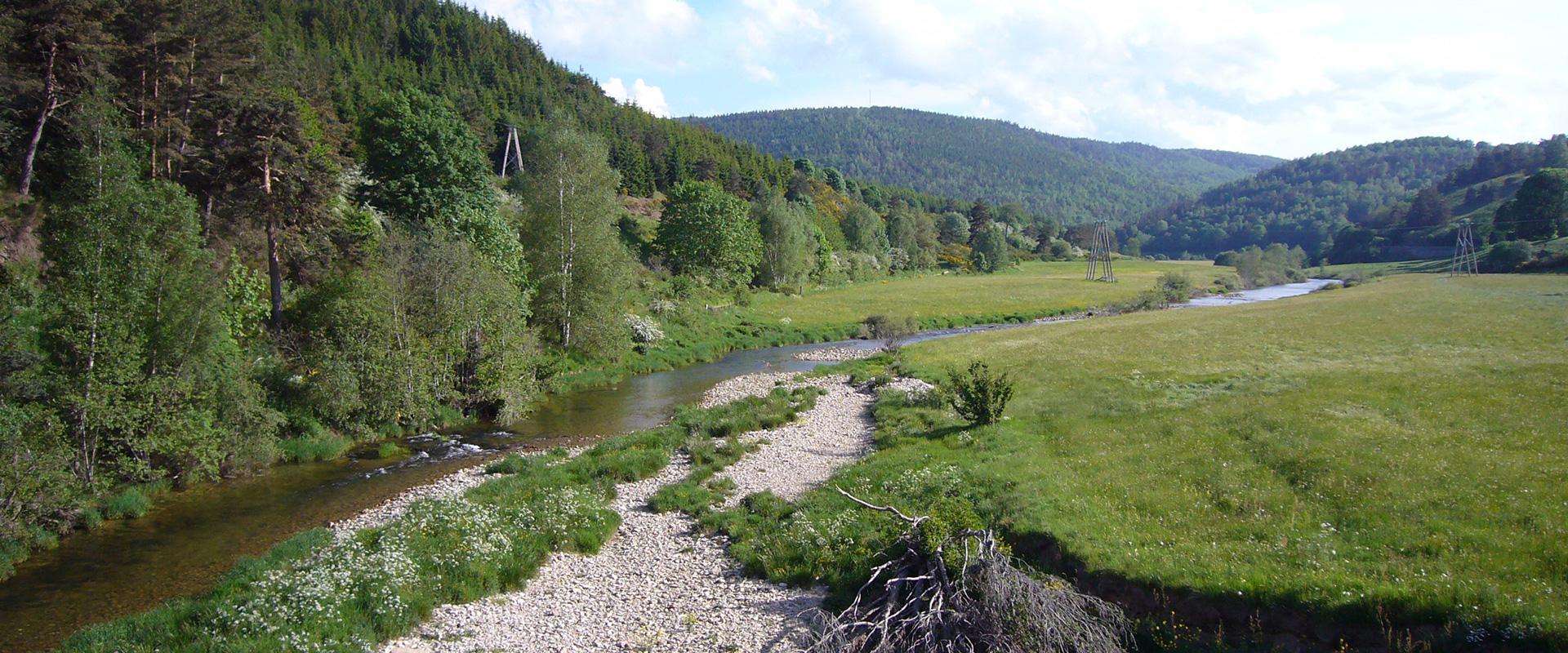The Transposa project (“transfer and quantification of sediment and metallic pollutant flows in the Allier basin”), was conducted from 2010 to 2012, in collaboration with the Loire-Brittany Water Agency, by a multidisciplinary team under the BRGM’s Regolith project.
The geology of the Allier river basin is highly diverse (hercynian bedrock, volcanism, sedimentary formations, hydrothermalism, etc.). Human activities are of varying intensity: the upper reaches are relatively well preserved, while substantial agricultural and industrial activity is affecting the basin further downstream.
There are also numerous derelict mining sites across the entire basin. This diversity makes analysing and understanding the mechanisms governing flows of metal substances a complex matter.
An exhaustive methodology
The work carried out by the geochemists, geomorphologists and microbiologists involved in the project consisted of analysing the Allier basin with a focus on the characteristics and parameters governing water chemistry (more than 350 analyses and 115 samples).
A global (holistic) approach was applied, in terms of both geographical scale and degrees of analysis (using a maximum number of parameters at each point).
Specific methodological developments in terms of environmental geochemistry have been one of the project’s strong points. One example is the use of a new isotopic tool (lithium isotopes) to study the processes of solid/liquid transfers of chemical elements.
Another is the use of combined approaches to identify the origins (agricultural, urban, mining or hydrothermal) of certain metallic elements (arsenic, antimony). The project demonstrated, for example, that transfers of metallic pollutants from former mining sites were not continuous and that in the Limagnes d’Allier district, some chemical elements partly originated in the hydrothermal activity of the Massif Central.
Development of a “toolbox”
Transposa resulted in the development of a “toolbox” including:
- the architecture of the database to be built up;
- a description of the geographic information system required to support spatialised interpretations of the data;
- the method for choosing the isotopes to be used and for combining this approach with more conventional analyses of major and trace elements depending on the catchment basin context.
The method developed by the Transposa project relies partly on data that are widely available in France (geology, land use, etc.) and partly on specifically targeted geochemical analyses. The method is entirely transposable to other catchment basins.







